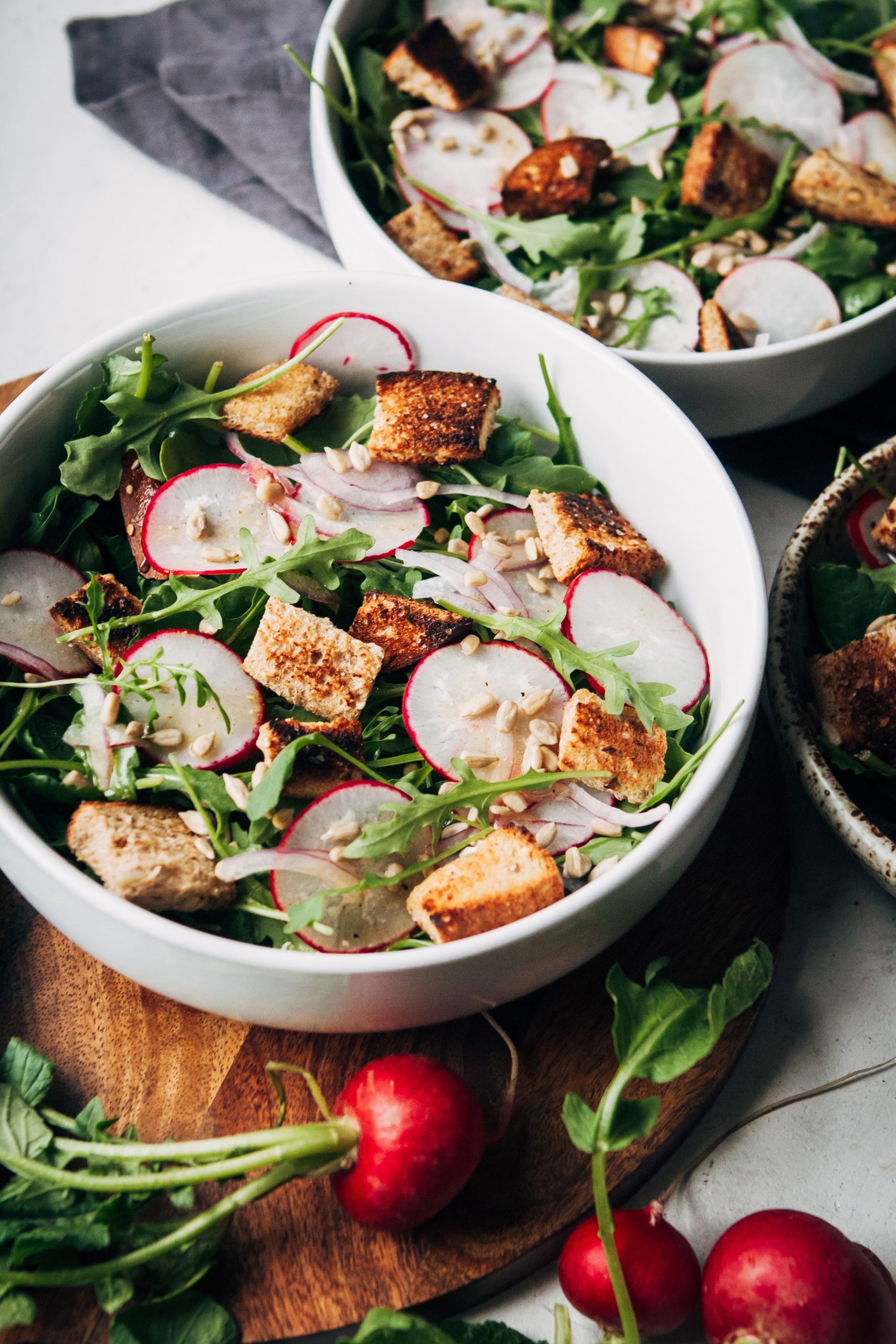It was the food critic and writer Michael Pollan who wrote, “Eat food, not too much, mostly plants.” This was his ultimate approach to eating healthfully and well. Each element of the sentence describes a crucial piece of the joy of eating: the act of eating itself, the art of moderation, and the benefits of following a mostly plant-based diet.
From a purely biological standpoint, eating is pure nourishment. Eating is giving the body what it needs to survive and thrive. But is it just that? Anyone who’s had the pleasure of enjoying a slice of Frank Pepe’s pizza in New Haven knows that there is more to eating than just fueling. Indeed, the gustatory experience of a good meal can transcend both time and memory. I remember this one particular meal I ate with my best friend and her parents – it was a salad, dressed with a simple oil and vinegar dressing, served with the most delicious crusty bread and a glass of red wine. That meal has stood out to me over the years not because it was complicated or fussy, but rather because the simplicity and quality of the ingredients made it so memorable.
But to a degree, I think many Americans have lost the simple joy of eating. It has become increasingly easier to order takeout or delivery than it is to cook a homemade meal. I know that I am certainly guilty of this. People who know me as a food photographer and blogger would be shocked to hear how often I’ve let restaurants cook for me. In my case, I think that I had come to conflate “food” with “work,” and slowly lost my love of preparing my own meals. For a time, cooking had become more of a chore than a path to happiness. But it doesn’t have to be this way, for me or for any home cook.
I believe that everyone can cook. Why? Because every single person is the arbiter of their own taste, the ultimate judge of what they love to eat. Anybody can learn to make a variety of meals that they will enjoy and savor. And don’t get me wrong, there is a time and place for eating out at restaurants. But there is something undeniably satisfying about enjoying the fruits of your own labor – the simple joy of eating a home-cooked meal.
Invariably, the question I get asked after making such a statement is, “How can I do this? How can I recreate my favorite restaurant flavors at home?” I used to be stymied by this very question myself. With so many different cuisines, ingredients, and techniques, the process of cooking can get very overwhelming. But there are simple tips and tricks that any home cook – or eater – can employ to make their food taste delicious.
My top suggestion is to be generous with salt. Ever wonder why restaurant food tastes so flavorful? The chefs aren’t afraid to use salt, and you shouldn’t be either! Salt itself is flavorless but acts as a magnifying glass that amplifies existing flavors in the food. Of course, over-applying the salt can render a dish inedible, but it’s been my experience that most home cooks under-salt their food. In general, a liberal pinch of salt can add an amazing dimension of flavor to your roasted vegetables, soups, and pastas.
My second tip is to familiarize yourself with sources of flavor, such as herbs, spices, and condiments. A homemade stir-fry can taste better than takeout with a simple splash of tamari (a variety of soy sauce). Even something as simple as a bowl of rice can be transformed with a handful of chopped parsley and a squeeze of lemon juice. Finding little ways to add flavor to your existing meals can transform them into something that’s truly delicious. Some of my favorite condiments and flavors include grainy, tangy Dijon mustard, spicy hot sauce, fresh citrus juice, apple cider vinegar, and nutty tahini.
My third tip, and the very foundation of my own culinary experience, is to read and cook from cookbooks. My copies of two of my favorite cookbooks, “My New Roots” by Sarah Britton and “The First Mess Cookbook” by Laura Wright, are studded with Post-it Notes and handwritten ideas in the columns. Learn how your favorite cookbook authors approach food and try applying their techniques to your own cooking.

At the very least, reading a variety of cookbooks will open your eyes to flavors and food combinations that you never would have considered before. In fact, one of the best pasta dishes I’ve ever had was from a cookbook; the sauce was a combination of tomatoes, mustard, smoked paprika, and sriracha. It was a combination that I read very warily, but the sauce turned out to be smoky, tangy, and bursting with flavor. It was one of the best things I had ever eaten! Keeping an open mind with your cookbook recipe selection can turn out to be the best thing you’ll do for your palate.
Armed with these tools and tips, the journey towards becoming a proficient home cook can be a delicious and joyous one. Food has the incredible power to nourish, to enliven, and to heal. So many of our societal joys are centered around food – the meal shared together on a first date, the gathering of family for Thanksgiving dinner, the barbecues that declare the start of summer – that it’s no wonder that it has undeniable powers to bring people together. People of all different cultures, backgrounds, and life stages can come together over a delicious meal.
Finding your inner cook and connecting to the joy of eating is a lifelong process that is rewarding in so many ways. Even something as simple as a soup recipe can be passed down from generation to generation, bridging families across time and space. The love of food, and the love of eating, is something that’s so universal and undeniably human. For all of you reading this, I wish you joy and happiness on your cooking and eating journeys!
Sarah Aldrich is a food photographer and blogger. Find her blog devoted to plant-based eating, Well and Full, at wellandfull.com.






More Stories
Wing It This Summer
Spring Pastas
Connecticut Chefs and One Bartender